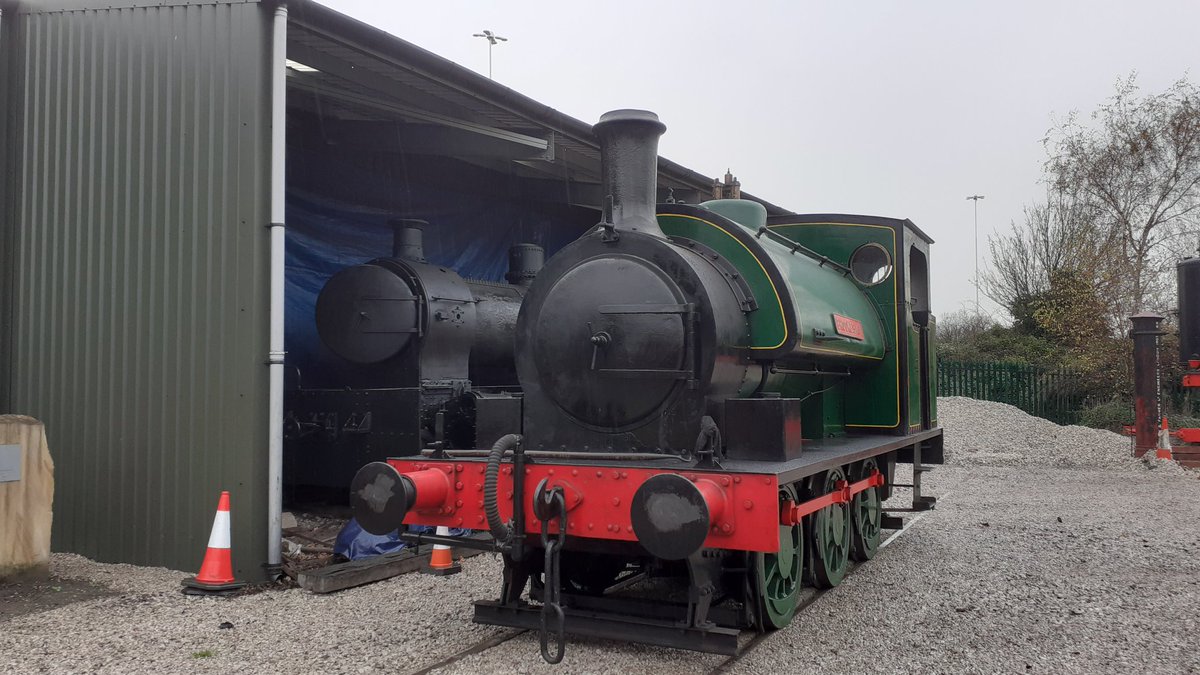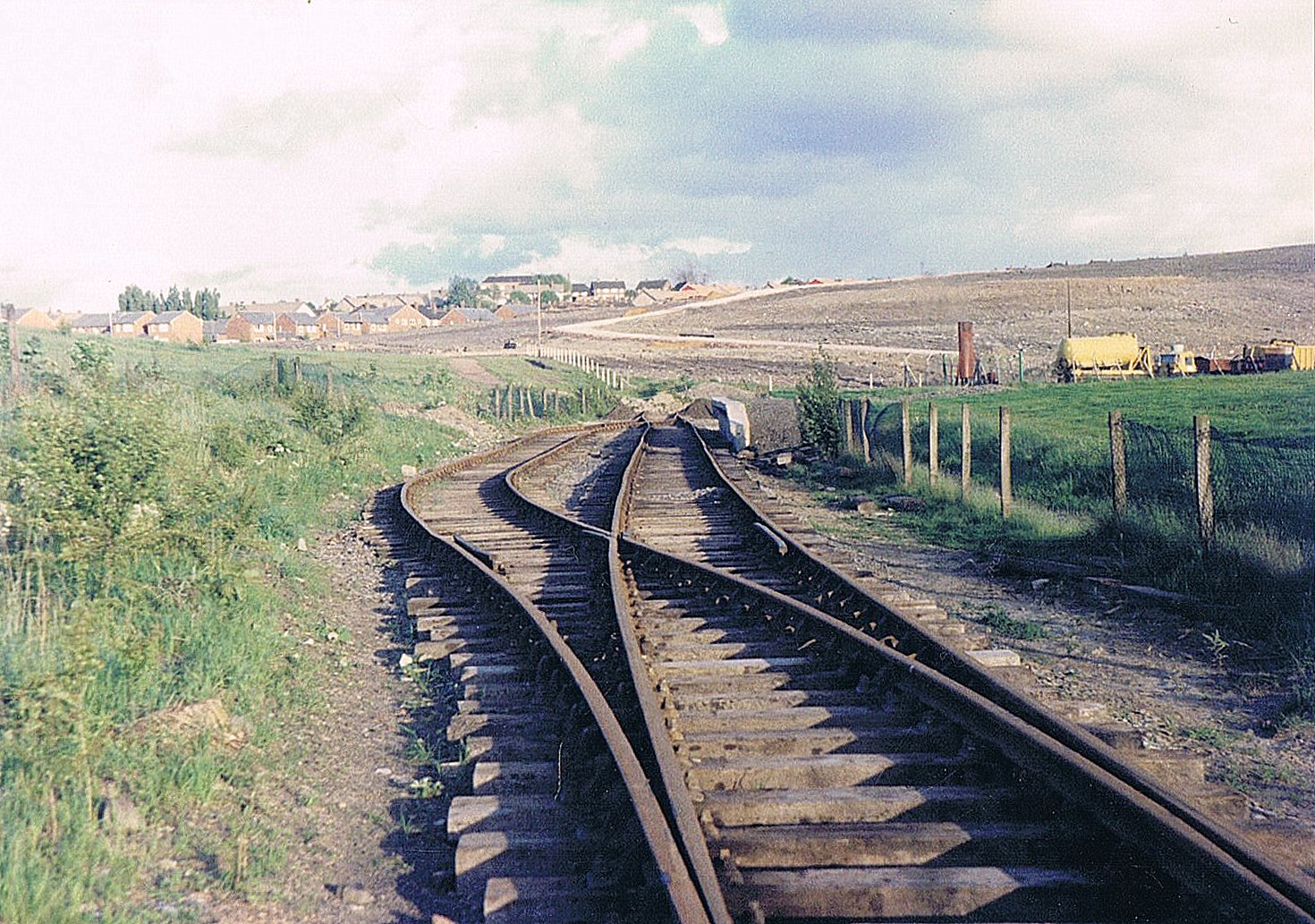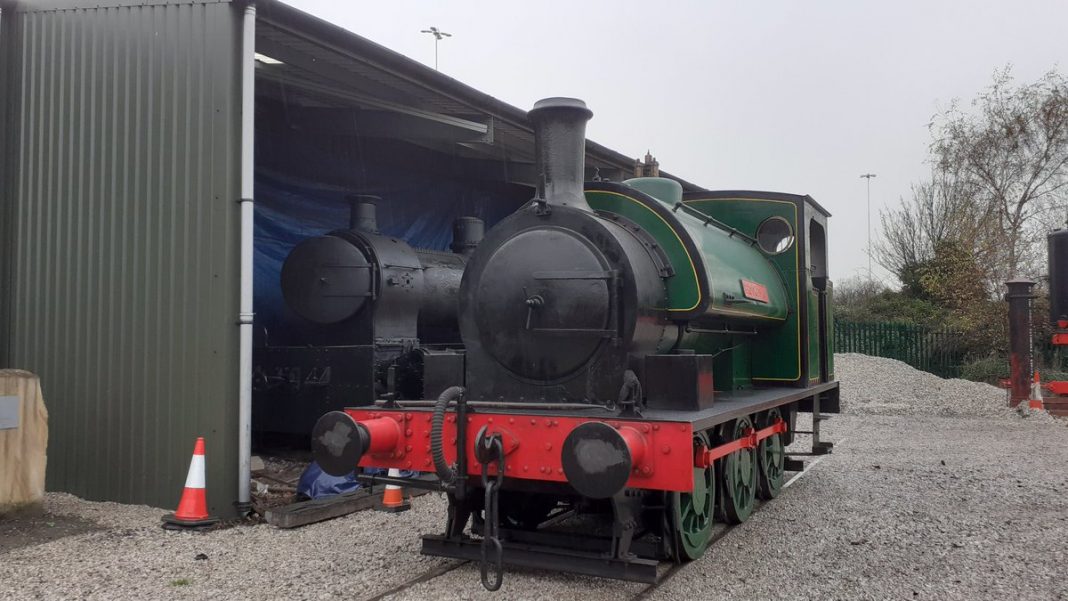The Middleton Railway is the world’s oldest continuously working public railway, situated in the English city of Leeds. It was founded in 1758 and is now a heritage railway, run by volunteers from The Middleton Railway Trust Ltd. since 1960.
The railway operates passenger services at weekends and on public holidays over approximately 1 mile (1.6 km) of track between its headquarters at Moor Road, in Hunslet, and Park Halt, on the outskirts of Middleton Park.
 Coal has been worked in Middleton since the 13th century, from bell pits, gin pits and later “day level” or adits. Anne Leigh, heiress to the Middleton Estates, married Ralph Brandling from Felling near Gateshead on the River Tyne. They lived in Gosforth and left running of the Middleton pits to agents. Charles Brandling was their successor.
Coal has been worked in Middleton since the 13th century, from bell pits, gin pits and later “day level” or adits. Anne Leigh, heiress to the Middleton Estates, married Ralph Brandling from Felling near Gateshead on the River Tyne. They lived in Gosforth and left running of the Middleton pits to agents. Charles Brandling was their successor.
In 1754, Richard Humble, from Tyneside, was his agent. Brandling was in competition with the Fentons in Rothwell who were able to transport coal into Leeds by river, putting the Middleton pits at considerable disadvantage. Humble’s solution was to build waggonways which were common in his native north east.
 The first waggonway in 1755 crossed Brandling land and that of friendly neighbours to riverside staithes at Thwaite Gate. In 1757 he proposed to build a waggonway towards Leeds, and to ensure its permanence Brandling sought ratification in an Act of Parliament, (31 Geo.2, c.xxii, 9 June 1758) the first authorising the building of a railway.
The first waggonway in 1755 crossed Brandling land and that of friendly neighbours to riverside staithes at Thwaite Gate. In 1757 he proposed to build a waggonway towards Leeds, and to ensure its permanence Brandling sought ratification in an Act of Parliament, (31 Geo.2, c.xxii, 9 June 1758) the first authorising the building of a railway.
 An ACT for Establishing Agreement made between Charles Brandling, Esquire, and other Persons, Proprietors of Lands, for laying down a Waggon-Way in order for the better supplying the Town and Neighbourhood of Leeds in the County of York, with Coals. The Middleton Railway, the first railway to be granted powers by Act of Parliament, carried coal cheaply from the Middleton pits to the Staith at Casson Close, Leeds (near Meadow Lane, close to the River Aire). Not all the land belonged to Brandling, and the Act gave him power to obtain wayleave.
An ACT for Establishing Agreement made between Charles Brandling, Esquire, and other Persons, Proprietors of Lands, for laying down a Waggon-Way in order for the better supplying the Town and Neighbourhood of Leeds in the County of York, with Coals. The Middleton Railway, the first railway to be granted powers by Act of Parliament, carried coal cheaply from the Middleton pits to the Staith at Casson Close, Leeds (near Meadow Lane, close to the River Aire). Not all the land belonged to Brandling, and the Act gave him power to obtain wayleave.
Otherwise the line was privately financed and operated, initially as a waggonway using horse-drawn waggons. Around 1799 the wooden tracks began to be replaced with superior iron edge rails to a gauge of 4 ft 1 in (1,245 mm). Cheap Middleton coal gradually enabled Leeds to become a centre of the many developing industries which used coal as a source of heat, e.g. for pottery, brick and glass making, metal working, and brewing, or as a source of power for mill and factory engines.












